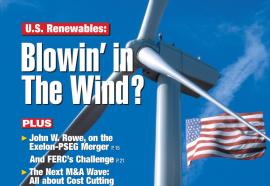Capacity Planning: The Good, the Bad, and the Ugly
Market-Power Tests: A review of FERC’s market-based rate (MBR) screens, from theory to application.
FERC’s market-power screens have been tested and found wanting in some areas. The author examines the screens’ strengths and weaknesses, then proposes future solutions.







